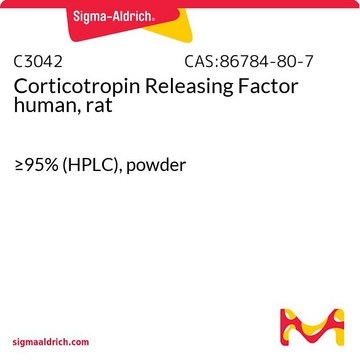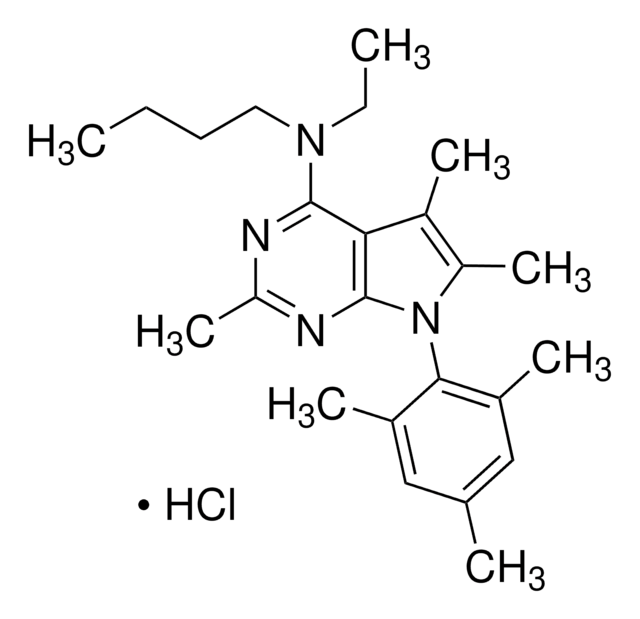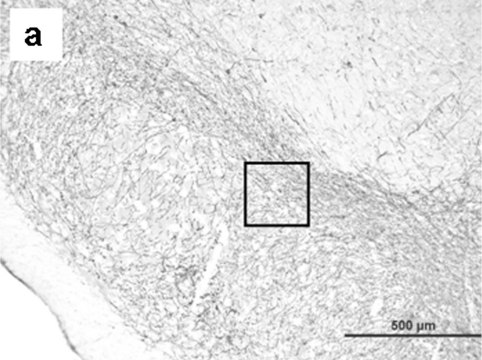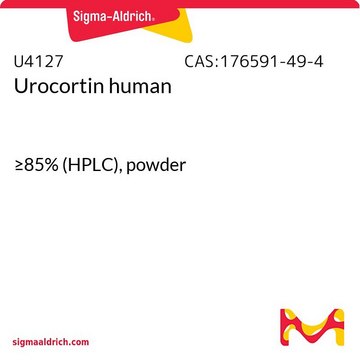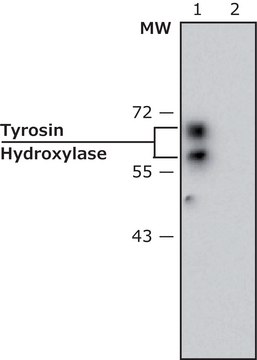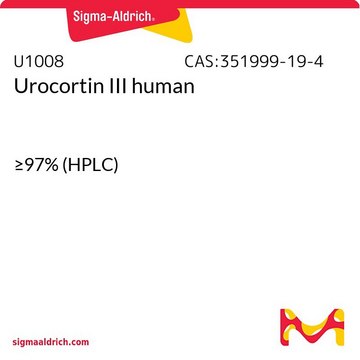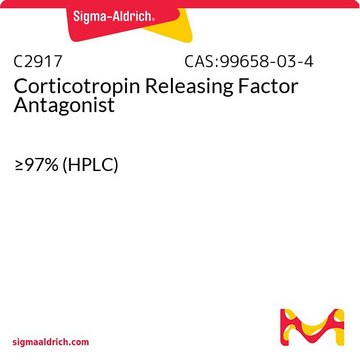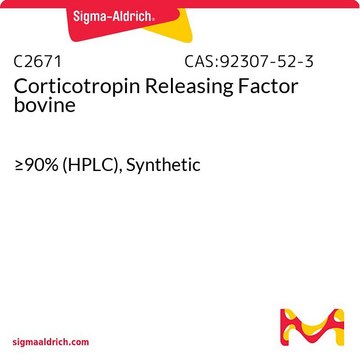All Photos(1)
About This Item
Empirical Formula (Hill Notation):
C206H338N62O64
CAS Number:
Molecular Weight:
4707.26
MDL number:
UNSPSC Code:
12352200
NACRES:
NA.32
Recommended Products
biological source
rat
Quality Level
Assay
≥97% (HPLC)
form
powder
technique(s)
western blot: suitable
solubility
1% acetic acid: >1 mg/mL, clear, colorless
UniProt accession no.
storage temp.
−20°C
Gene Information
rat ... Ucn(29151)
Amino Acid Sequence
Asp-Asp-Pro-Pro-Leu-Ser-Ile-Asp-Leu-Thr-Phe-His-Leu-Leu-Arg-Thr-Leu-Leu-Glu-Leu-Ala-Arg-Thr-Gln-Ser-Gln-Arg-Glu-Arg-Ala-Glu-Gln-Asn-Arg-Ile-Ile-Phe-Asp-Ser-Val-NH2
Application
Urocortin rat can be used for western blotting. The product can also be used for studying that whether CRF receptor type 2 (CRF2) and its high-affinity ligand, urocortin 1 (Ucn1) can mediate sex-specific cellular stress responses by using corticotropin-releasing factor receptor 2-deficient (Crhr2-/- ) and wild-type (WT) mice.
Biochem/physiol Actions
Binds to CRF receptor types 1, 2α, and 2β.
Binds to CRF receptor types 1, 2α, and 2β; stimulates cAMP accumulation from cells transfected with these receptors. Acts in vitro to release ACTH from rat anterior pituitary cells.
Urocortin is a CRF-related neuropeptide that binds to CRF receptor types 1α, 2α and 2β. It possesses appetite-suppressing effect. Urocortin along with corticotropin-releasing factor (CRF) binding protein (CRF-BP) enhances the free CRF levels in human brain by displacing hCRF from the binding protein.
Preparation Note
Urocortin rat dissolves in 1% acetic acid at 1 mg/ml to yield a clear, colorless solution.
Other Notes
Lyophilized from 0.1% TFA in H2O
Storage Class Code
11 - Combustible Solids
WGK
WGK 3
Flash Point(F)
Not applicable
Flash Point(C)
Not applicable
Personal Protective Equipment
dust mask type N95 (US), Eyeshields, Gloves
Regulatory Information
监管及禁止进口产品
Choose from one of the most recent versions:
Already Own This Product?
Find documentation for the products that you have recently purchased in the Document Library.
Urocortin interaction with corticotropin-releasing factor (CRF) binding protein (CRF-BP): a novel mechanism for elevating "free' CRF levels in human brain.
Behan DP
Brain Research, 725 (1996)
Eric Kubat et al.
Molecular medicine (Cambridge, Mass.), 19, 212-222 (2013-07-10)
Although females suffer twice as much as males from stress-related disorders, sex-specific participating and pathogenic cellular stress mechanisms remain uncharacterized. Using corticotropin-releasing factor receptor 2-deficient (Crhr2-/-) and wild-type (WT) mice, we show that CRF receptor type 2 (CRF2) and its
A De Luca et al.
European journal of histochemistry : EJH, 53(3), 167-176 (2009-10-30)
Urocortin (UCN) is a 40 aminoacid peptide which belongs to corticotropin-releasing factor (CRF) family. This family of peptides stimulates the secretion of proopiomelanocortin (POMC)-derived peptides, adrenocorticotropic hormone (ACTH), beta-endorphin and melanocyte-stimulating hormone (MSH) in the pituitary gland. In the present
Nina C Donner et al.
Progress in neuro-psychopharmacology & biological psychiatry, 96, 109730-109730 (2019-08-16)
The bed nucleus of the stria terminalis (BNST) is a nodal structure in neural circuits controlling anxiety-related defensive behavioral responses. It contains neurons expressing the stress- and anxiety-related neuropeptide corticotropin-releasing hormone (Crh) as well as Crh receptors. Repeated daily subthreshold
M Spina et al.
Science (New York, N.Y.), 273(5281), 1561-1564 (1996-09-13)
The neuropeptide corticotropin-releasing factor (CRF) is well known to act on the central nervous system in ways that mimic stress and result in decreases in exploration, increases in sympathetic activity, decreases in parasympathetic outflow, and decreases in appetitive behavior. Urocortin
Our team of scientists has experience in all areas of research including Life Science, Material Science, Chemical Synthesis, Chromatography, Analytical and many others.
Contact Technical Service